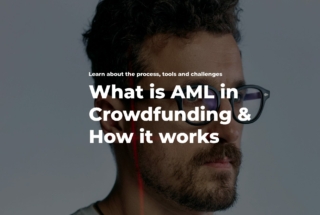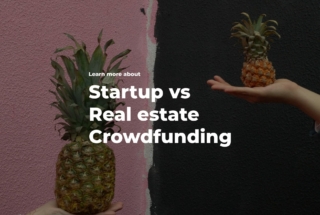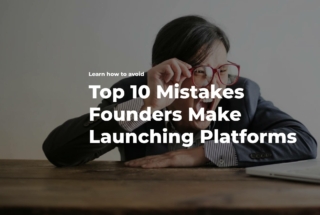Cap Tables in Crowdfunding: How They Work
A capitalization table in crowdfunding is a way of keeping a record of each type of equity ownership. While it sounds pretty straightforward, many crowdfunding businesses still argue how a cap table should look to be more attractive for venture investors in the future.
The main question is whether the cap table should list all the investors or keep them in one line through the application of a Special Purpose Vehicle (SPV).
What you will learn in this post:
How crowdfunding platforms manage cap tables
Some platforms such as StartEngine insist that you need to have all the investors in the equity crowdfunding capitalization table because the SEC doesn’t allow the use of an SPV, others such as WeFunder inform their clients that they use an SPV to bring all investors under one line in a capitalization table. So who is right and how do you manage cap tables in crowdfunding?
SEC regulations regarding SPVs in crowdfunding
It seems like it was illegal to use an SPV for crowdfunding purposes if a company is registered or operates in the USA.
But on March 15, 2021, the long-awaited amendment was made. The SEC allowed to apply an SPV for crowdfunding purposes as long as an “SPV acts as a conduit for investment in a crowdfunding issuer, and the investors are provided with the same economic exposure, voting power, and other rights as if they had invested in the crowdfunding issuer”.
Therefore, arguments about whether it is permitted to use an SPV in crowdfunding for platforms registered in the USA are outdated. Those businesses that insist that it is illegal most likely haven’t updated their information and thus, are misleading both investors and fundraisers.
There is no more need to look for legislation gaps to implement such a tool as an SPV. But the question is still open whether all investors shall be listed in a cap table or is it better to avoid long lists and use an SPV to bring all investors under one line? Opinions differ.
When to use SPVs for cap tables
Many business owners believe that having a long cap table would affect their businesses adversely by inhibiting a company from raising funds in the future.
We have explored the ways how a short or a long capitalization table can affect a business, and we have found out that there are some benefits in using an SPV to make the cap table short. While this detail is not crucial for further fundraising opportunities, it matters for startups because it helps to avoid triggering the Exchange Act Reporting Requirements.
Keep in mind that Title III issuers don’t need 17 CFR §240.12g5-1 to avoid reporting under section 12(g). Under 17 CFR §240.12g6(a), securities issued under Title III don’t count toward the 500/2,000 thresholds, as long as the issuer uses a transfer agent and has no more than $25 million of assets, as Mark Roderick, a US-based crowdfunding laywer explains in his blog.
According to the Requirements, any company with more than 500 non-accredited investors shall report financial data. Such reports are time-demanding, and to manage them, a company might even need the services of an auditor to comply with the requirements. It might be a financial burden for startups. Therefore, in this regard, the application of an SPV is beneficial.
However, there are also financial drawbacks. Establishing an SPV means establishing a new legal entity. It means an additional financial burden that will be borne by investors or the capital raising companies, depending on the crowdfunding platform’s strategy.
How to manage your crowdfunding cap table without an SPV
According to the expert opinion of a tax lawyer, Mark Roderick, companies can go without an SPV.
It is believed that long capitalization tables don’t look attractive for venture investors from whom a business might be planning to raise funds in the future, it is rather a bias than the truth. You can see that there are big companies that have thousands of investors, and they are fine with managing their cap tables. While they still might hire a specialist or a company to manage their reports, it doesn’t push their investors away.
Startups that raised funds from multiple investors can move to a public offering and handle them successfully even though their cap tables might be impressively long. It means that the length of a capitalization table shall not be an issue.
But issuing the “wrong” shares to the early investors might cause serious problems for future fundraising attempts.
For example, a business raised funds from 10 investors and gave them voting rights. It means that business owners aren’t able to decide solely on the business’s future but to rely on the opinion of the early investors who might not know the business properly. Such investors might even inhibit the company from raising funds further from, say, a public offering.
Therefore, early investors with voting rights are a red flag for those who would be willing to invest in the company at later stages because nobody wants to risk investing in a business where the business owners cannot make decisions.
However, if a business raises funds from 1,000 investors but shares issued to them do not provide them with voting rights, further, the business can continue raising funds when needed.
Therefore, is it not the cap table length that matters. It is the type of securities offered to investors. If a business offers the right type of securities, there is no reason to be afraid of long capitalization tables.
Final thoughts about cap tables in crowdfunding
When it comes to working with customer objections in regards to crowdfunding cap table management, you can refer to both cases and follow a StartEngine or WeFunder strategy.
If you’re just starting out your crowdfunding platform and need crowdfunding software for running and managing your online business, consider LenderKit. LenderKit is white-label investment software which has everything you need from the admin backoffice to investor dashboard and marketing site. We can also integrate it with popular cap table management solutions like Carta or build a simple custom cap table in the platform itself.



